Empowering Tana River Community Members towards Climate Action: Insights from Discovery Sessions

May 3, 2024
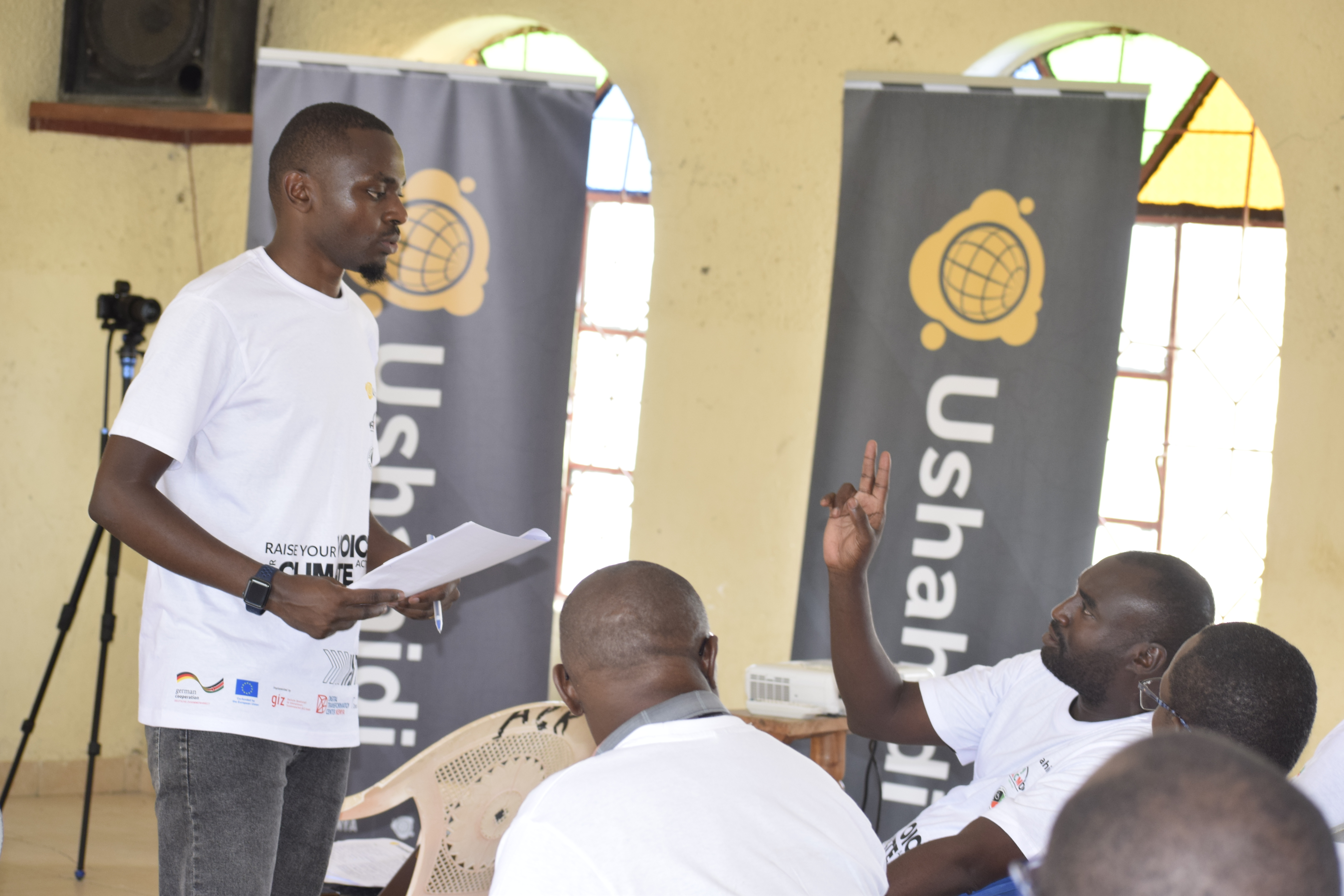
Tana River: 28 Dead, Scores Missing as Boat Carrying over 50 Capsizes at Kona Punda
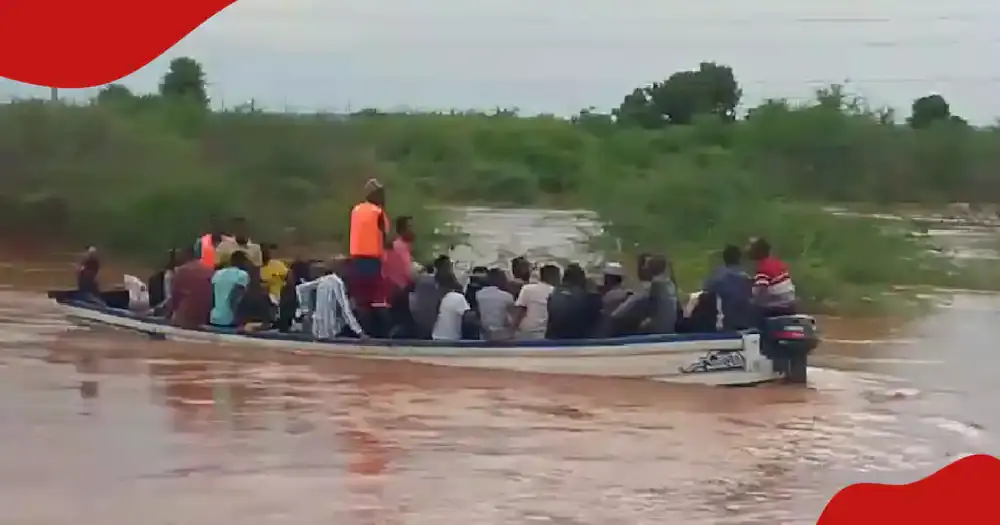
The boat was carrying over 50 people when it capsized at Kona Punda. Photo: Eastleigh Voice.
Source: Twitter
- Garissa Senator Ali Roba said 28 lives have been lost while many are still unaccounted for after a boat capsized in Tana River
- The boat, which was carrying more than 50 people, capsized while trying to cross River Tana, which was flooded
- The Kenya Red Cross said 23 passengers had been rescued by 9:50 p.m., the search for the missing people is ongoing.
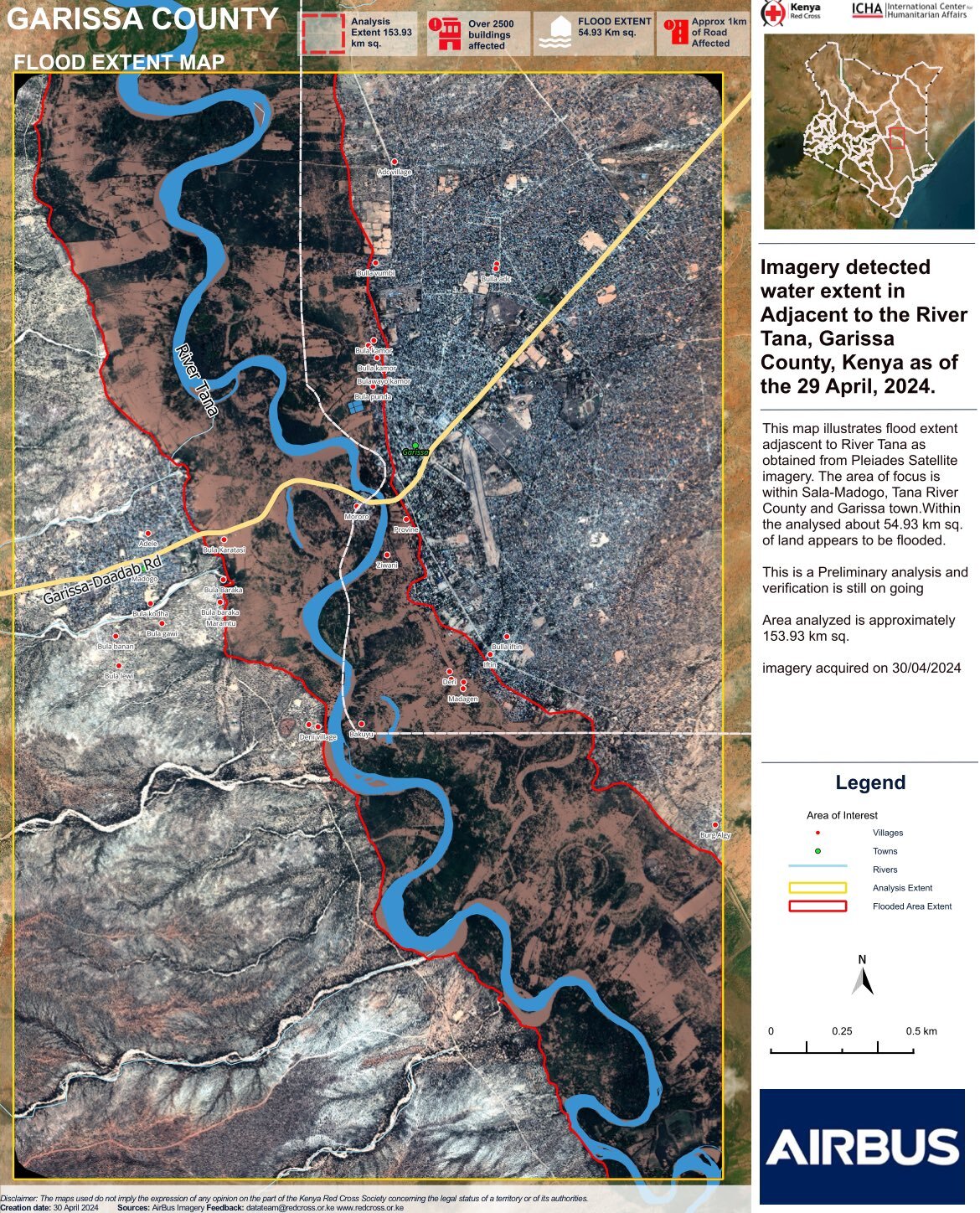
The extent of flooding along the Tana River. Courtesy: International Centre for Humanitarian Affairs.
Analysis of satellite imagery showing expansive farmlands under water and livelihoods lost. Thus, an increase in the displaced population between April 15th & April 30th. The total number of households displaced in Garissa has exceeded 16,000. Most affected areas include Mororo, Ziwani, Bula punda, Deri, Madagen, Bakuyu, Iftini and Provine. The recovery period will be longer than the rain season.
The above - snippets of the current news from Tana River County - which is currently being ravaged by floods due to the long rains season.
On the backdrop of this stark reality is a GIZ Kenya (Digital Transformation Center - Kenya) funded climate action project currently underway to support Tana River County to leverage the Ushahidi data platform on crowdsourcing how low-resource communities in Tana River County are being impacted by and responding to changes in weather and climate.
This is scaling the 2022 Ushahidi and World Vision Kenya pilot climate action project (with support from GSMA) to create awareness of natural resource management and collect data on sustainable land use to aid decision-making by policymakers and stakeholders in the Tana River Climate Change and Livelihoods Restoration Project (T-CLIRP).
While the pilot project was done in one sub-county, this scaling project is being carried out across the three sub-counties: Bura, Garsen and Galole (Hola). We completed Phase 1: Inception which included holding discovery sessions with a cross-section of community members across the three sub-counties, co-creating the main survey with the community members, and conducting a baseline survey. The aim of the discovery session was to introduce the project and gather information on general climate trends, natural disasters/environmental hazards, impacts on the community's livelihoods, disaster preparedness and governance, public participation, community priorities, and communication channels/timing to assess the community's understanding, preparedness, and response mechanisms for climate-related challenges. This provided deeper insights into the development of the survey questions to be rolled out through the Ushahidi Platform to the general community.
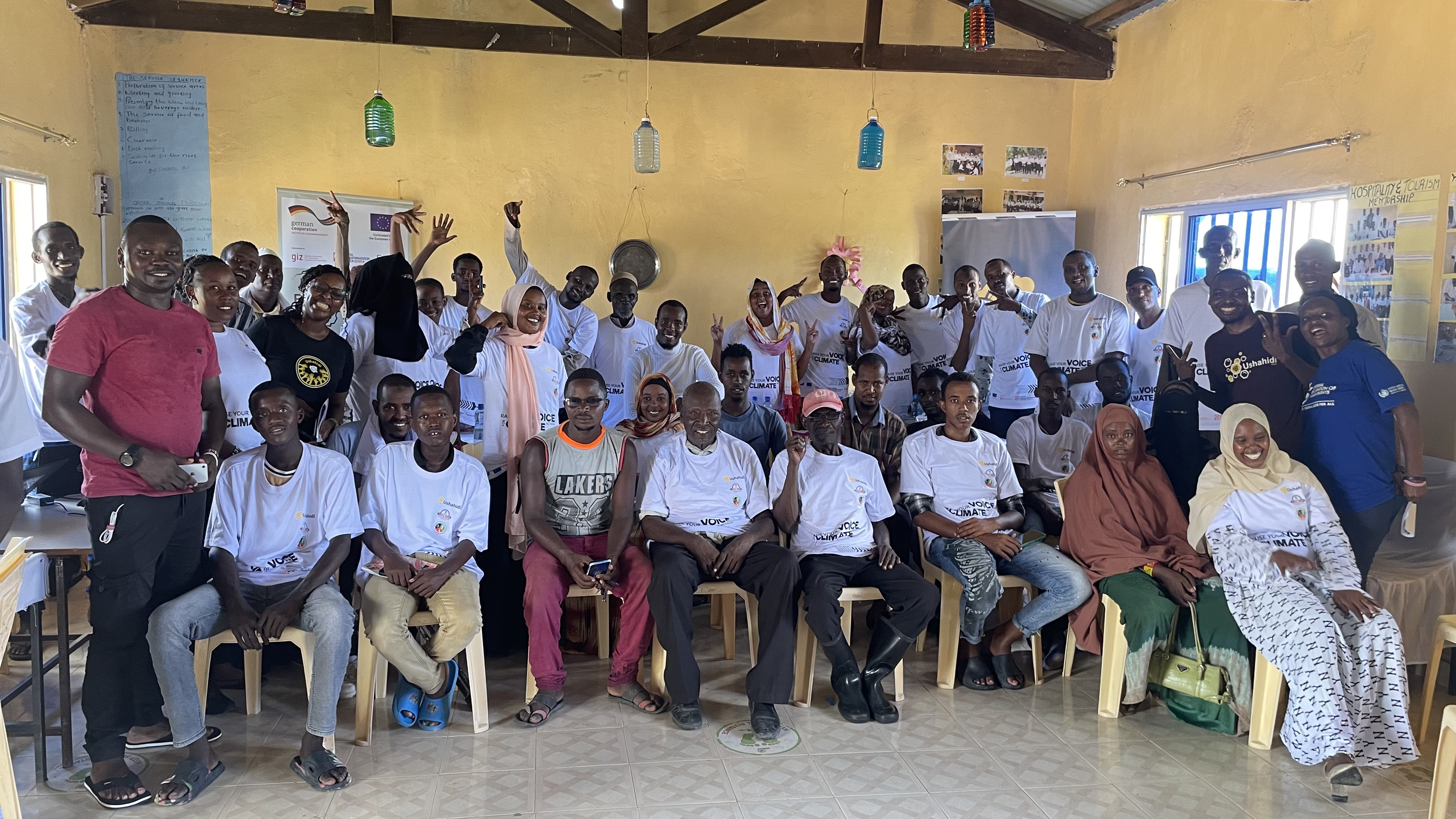 Community members at one of the discovery sessions
Community members at one of the discovery sessions
Below are highlights from the discovery sessions:
Understanding Climate Change and Climate Trends:
- Community members demonstrated a nuanced understanding of climate change, attributing recent weather extremes of both rain and sun.
- Over the past five years, community members noted alarming trends, including intensified rainfall during the long rainy seasons, augmented by more frequent and devastating droughts. These climatic shifts have ravaged agriculture, decimated livestock, and eroded economic stability.
Vulnerable Communities:
- Youth, persons with disabilities (PWDs), women, farmers, herders, and children emerged as the most vulnerable segments (especially with regard to economic setbacks), bearing the brunt of climate-induced hardships. We worked with the National Council of Persons with Disabilities (NCPWD) to ensure the representation of persons with disabilities from the inception of the project.
This feedback bolstered the need to ensure adequate representation and inclusion of these disenfranchised community groups in the decision-making processes and implementation of such climate action projects. Their exclusion hinders the comprehensive understanding of the unique challenges faced by these groups, leading to potentially ineffective climate solutions that do not address their socio-economic needs and vulnerabilities.
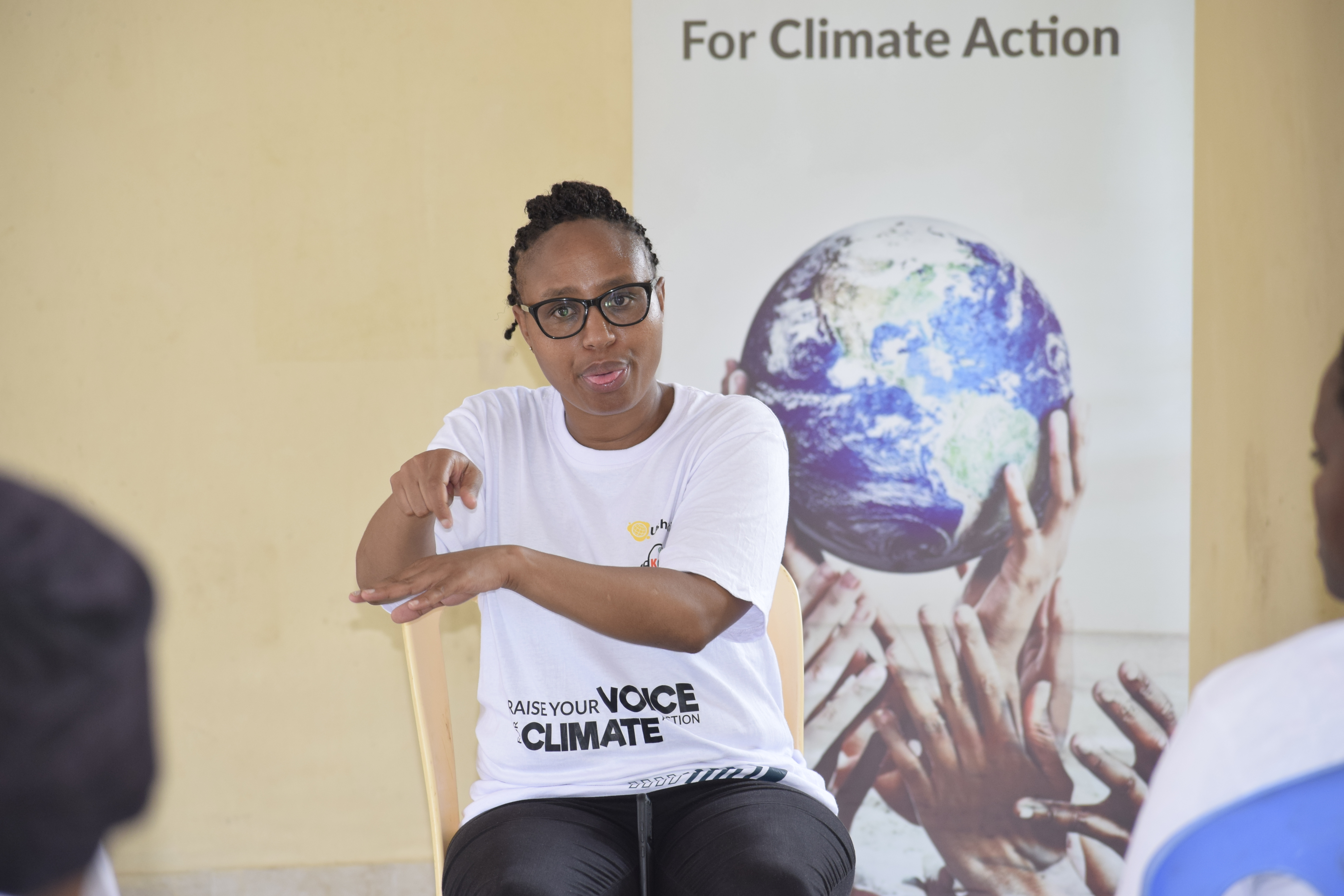 Sign language interpreters were present at all the sessions.
Sign language interpreters were present at all the sessions.
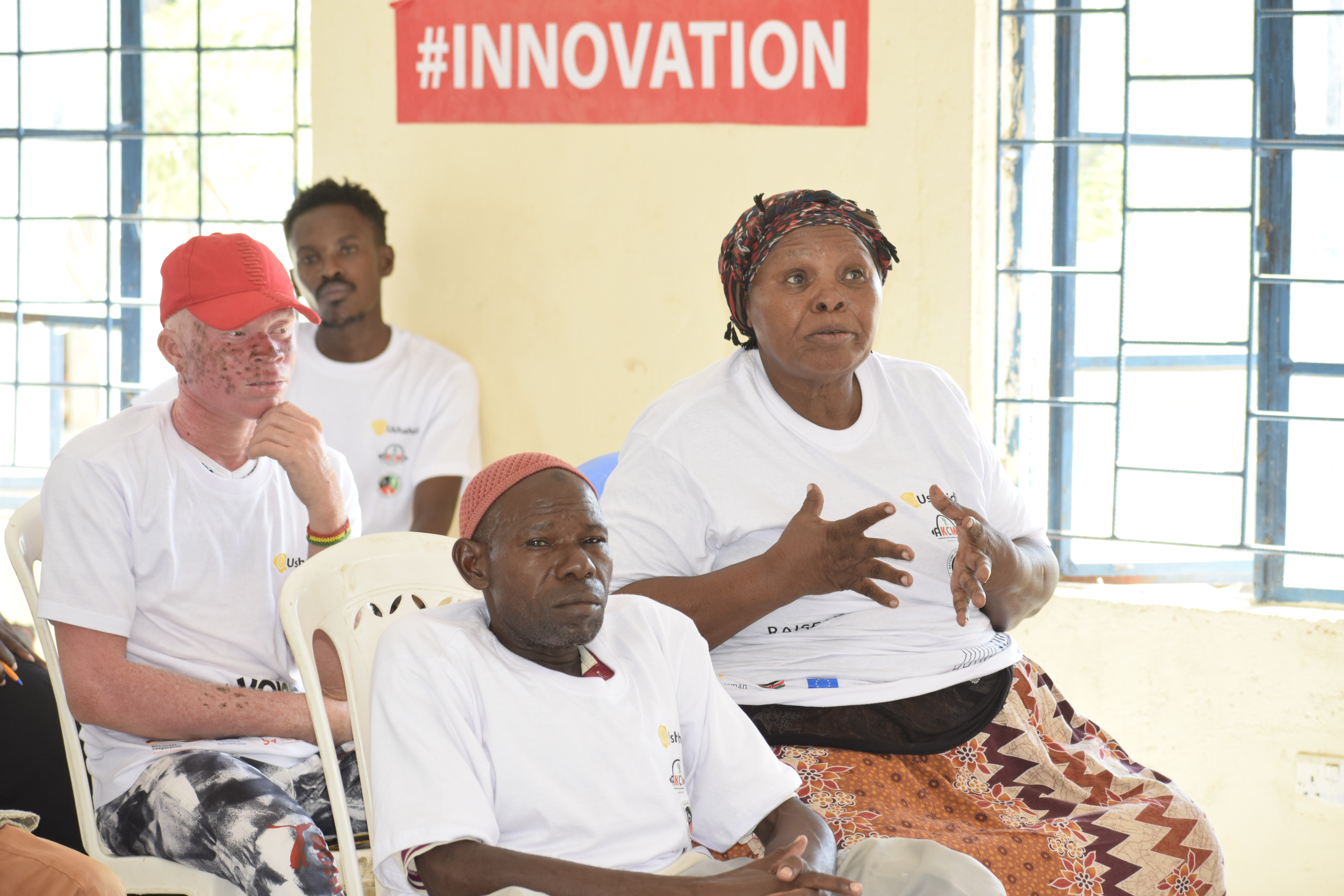 Persons with Disabilities were represented at all sessions
Persons with Disabilities were represented at all sessions
Disaster Preparedness, Response and Governance:
- Limited disaster response plans were observed, highlighting the need for robust governance structures and enhanced communication channels.
- While NGOs (such as Red Cross, WFP, etc.) and government agencies were recognized at the forefront of emergency response, community members voiced apprehensions regarding aid quantity and quality. Additional concerns on the response mechanisms lingered on the inadequacy of addressing the underlying causes of disasters.
Priority Needs:
- Combating malnutrition, creation of evacuation awareness, construction of dams for water harvesting, grass planting for ground cover, restocking, and early warning systems, were the strategies communities articulated as vital for climate resilience and sustainable development.
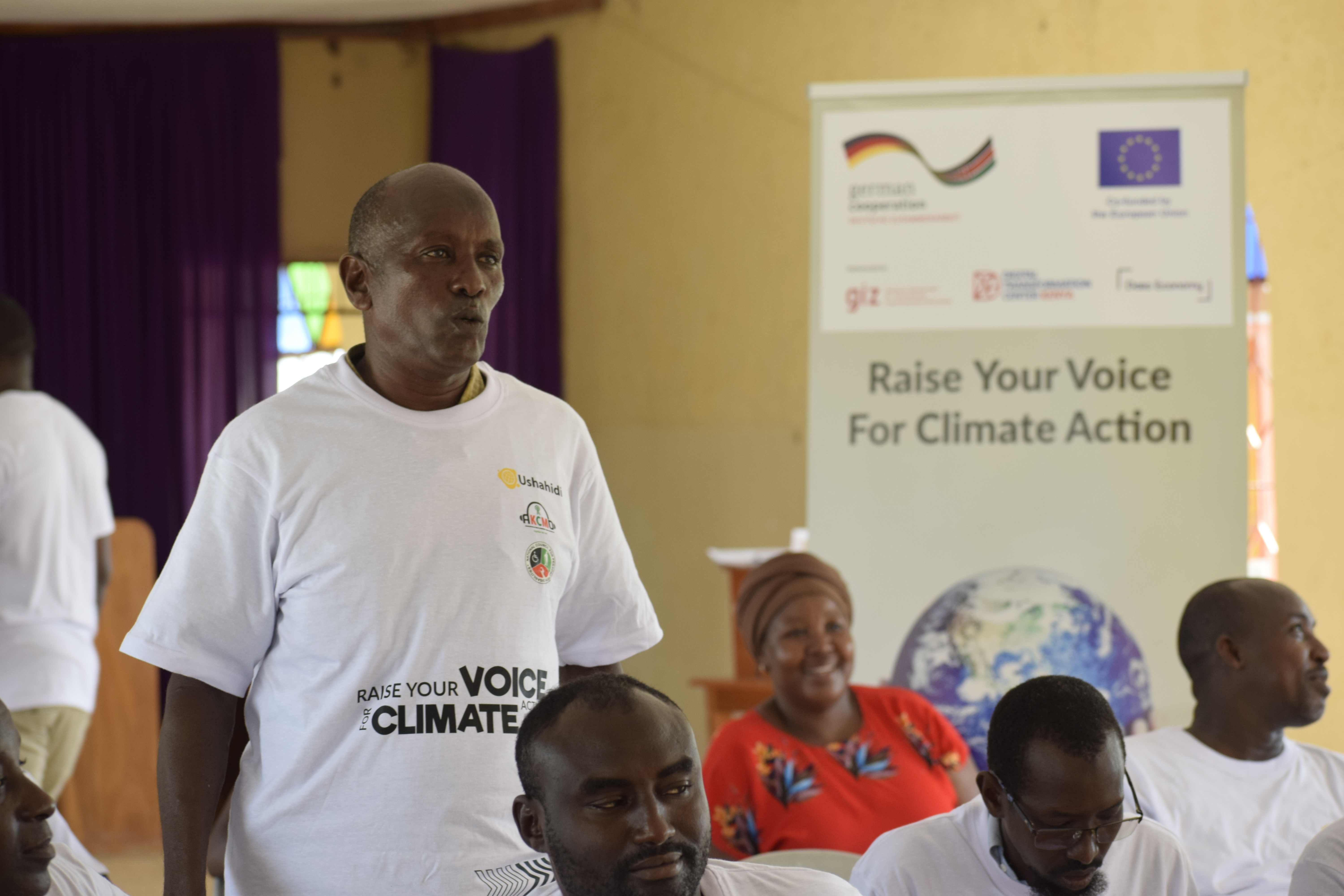 A community member sharing his views
A community member sharing his views
Community Engagement:
- Active involvement through Ward Climate Change Committees underscores the community's commitment to collective action, some of which include tree planting, early evacuation, and climate-smart agriculture (introduced by the local government).
- In addition to the above meetings, the community is engaged in matters of climate action through various communication channels ranging from traditional methods such as elder barazas (elders’ meetings), to TV and radio and online modes of social media platforms. Of note are the SMS alerts from Red Cross that were highlighted as a trusted communication channel.
These successful discovery sessions were only possible through the consent of the Tana River County Government through the Assistant County Commissioner who warmly received us, reflecting the county's eagerness to collaborate on climate resilience initiatives. The county government has established a Climate Sector Working Group (CSWG) - a technical team to coordinate climate-related initiatives and interventions and thus are keen on the outcomes of this project.
This project’s inception was a success and in part two of the project blog series, we delve into the baseline survey outcomes. Stay tuned!